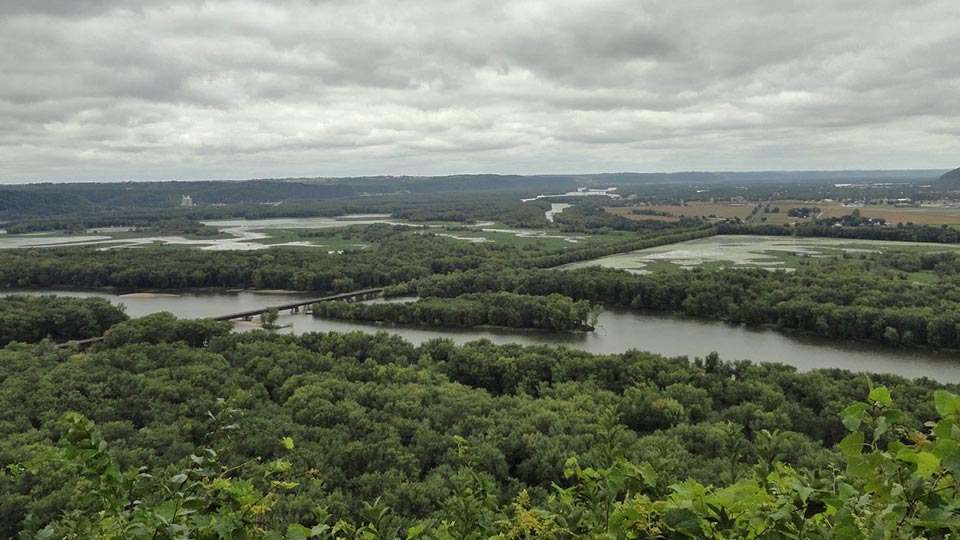
LA CROSSE, Wis. — This week brings good news for the 107 pros competing at the Bassmaster Elite at Mississippi River presented by Go RVing. They can fish like they do anywhere else on the schedule, with culling allowed throughout the day to upgrade weights.
Previously a no-cull rule was in effect on the Minnesota side of the river. The rule meant no culling of bass was allowed if five fish were in possession of the angler. That all but eliminated the chances of culling up to improve weights if you wanted to do so in Minnesota. In Wisconsin the anglers were free to catch, release and keep legal size fish up to the 5-bass limit.
Keeping count and recognizing locations of state borders was a must. With that rule no longer a worry there is another reason to be conscientious of the borderlines.
The Mississippi River is expected to continue rising during the tournament. Whenever it reaches 10 feet, expanded no-wake zones go into effect in Pool 8. Those are within “developed shoreline areas” as defined by La Crosse County and the City of La Crosse.
The no wake zone exists within 100 feet of any dock, pier, buoyed restricted area or public boat landing within the pool throughout La Crosse County. That area extends from Lock and Dam No. 7, on the Wisconsin side, to the southernmost tip of Goose Island.
Those no-wake zones dot the map, covering docks and other property most sensitive to boat wakes in the narrow channels defining the pool. One particular stretch could be troublesome for some anglers. Whether or not it will be a game changer is unknown at this time.
“Impacts should be minimal, but the residents along the Black River can get testy,” said Rob Abraham, assistant chief of police. “It’s a very populated area and doesn’t take much to create problems for the homeowners.”
The area in question is the Black River, just north of the launch site at Veterans Freedom Park in downtown La Crosse. The off limits area extends to both sides of the bank, laying down a speed bump of sorts for anyone choosing to travel to the Onalaska Dam and Spillway.
“It could add 15 minutes of idle time for the guys who will fish up there,” said Ott DeFoe, who won here in 2016.
That year a number of anglers, and top finishers, turned north from the launch site and sped up the Black River to fish the downstream waters of the spillway.
Progress is being made with instilling solidarity to the no-cull rule on both sides of the state lines, although the clarity remains murky. Tournament anglers can cull in both states if the tournament organizer obtained an event permit in Wisconsin. Culling is not allowed for anglers fishing on the Wisconsin side of the river if the tournament permit is issued in Minnesota.
B.A.S.S. Conservation Director Gene Gilliland said efforts are ongoing to make the culling rule open to non-tournament anglers in Wisconsin.
“Our wish is for all states to adopt uniform limits that make it fair for all anglers, not just tournament fishermen,” he said.

